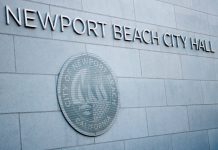Newport Beach City Council heard the proposed Arts Master Plan during a study session Tuesday and most agreed it’s headed in the right direction.
City Council previously requested that the Arts Commission begin to develop private supportive partnerships to reduce the reliance on public funds for arts programs.
Commissioners also aimed to identify goals and objectives based, develop a long- term vision for arts in the city, and set in place additional public review of sculptural arts selections.
The Arts Commission drafted a three year funding and staffing plan to create a long-term self-sufficient arts program in the city. The plan, if approved by Council, is expected to provide the necessary funds to support existing programs and to transition into programming with private funding.
“This is a good first step going down this road,” Selich said. “Obviously a lot of details need to be fleshed out on it, but at least it’s starting out to put together a road map of where we want to go.”
There are a number of “fundamental changes” needed in order to accomplish these goals, staff noted in the report. The most significant change would be the transition to more private funding.
Raising private funds is a difficult, long-term endeavor, said Arts Commissioner Michael Kerr. A private and public funding plan will help the arts be successful in the city, he added.
“Will we ever be 100 percent privately funded? I don’t know,” Kerr said. “And honestly, I think there is a place for public funding as well, but it has to be measured and it has to be partnered along with private funding.”
Any city where art is a significant part of the culture of the community also includes a significant public funding component, noted Councilman Keith Curry.
In those towns, art helps drive the local economy and define the community, he added, and the city is an active participant.
He encourages a “vigorous foundation and active fundraising,” but also doesn’t want to see the city retreating on its commitment to the arts.
The master plan aims to create public/private partnerships and has identified three sources: Balboa Performing Arts Theater Foundation, Visit Newport Beach, and development agreement capital funds.
In May of 2015, the Balboa Performing Arts Theater Foundation distributed their remaining assets of $175,000 as a one-time donation to the Newport Beach Art Foundation. The foundation turned the funds over to the city to be specifically used for performing arts with a preference to the Balboa Village area of town. None of these funds have been used yet.
The Arts Commission hope to use $85,000 of these funds in 2016 to stage a performance by the Pacific Symphony in the Civic Green and to present a Chalk Art Festival on the Balboa Peninsula.
The city and Visit Newport Beach have an agreement that states that Visit NB will contribute $150,000 per year to the city for programs or activities that benefit the public. Commissioners are proposing that the $150,000 in VNB funds be allocated for up to three years to fund a Development Manager position for the Art Foundation.
The manager would advise the Art Foundation Board, work with the community to implement the vision of the Arts Master Plan, and fundraise. Staff hopes the position will pay for itself by the end of the third year.
Policy I-13 authorizes the deposit of two percent of the unallocated public benefit fees received by the city from development agreements into the Public Art and Cultural Facilities Fund.
These funds are intended to acquire and maintain permanent art structures and installations in public places. But officials decided that since the park is permanent, those funds could be used to support the rotating sculpture garden exhibit, Assistant City Manager Carol Jacobs explained at a recent Arts Commission meeting.
City Attorney Aaron Harp agreed, but if there was any potential conflict Council could always vote to waive the policy to allow the funds be used in the sculpture garden.
The Commission proposes appropriating $250,000 from the Public Art and Cultural Facilities Fund for Phases and IV respectively. If private fundraising by the Art Foundation is successful, the Council may direct that these private funds may supplant all or portions of the Phase IV amount.
The master plan also calls for growing the Newport Beach Art Foundation into a “full-fledged fundraising arm” for the commission. Part of this would include bringing in new members who are more familiar with and adept at nonprofit fundraising and development.
Muldoon questioned whether the city would be liable or have any responsibility regarding pension for the development manager, Hetherton replied the city would not, the manager would be a Foundation employee.
He also asked how the commission would still advise and consult the council
“What control do we have? If we don’t think the art represents Newport Beach or if we, quite frankly, think it’s a waste of money, or the neighbors say it’s offensive to look at?” Muldoon asked.
The Foundation, even if it is the primary fundraising branch for the Commission, won’t have control over what art is chosen in the city.
“We don’t decide what’s going to be purchased,” clarified Carmen Smith, President of Newport Beach Arts Foundation. They only hold the funds until instructed by the Arts Commission.
As an advisory board, the Commission will still come to Council to weigh in on projects and make the final decision, Hetherton explained.
“That’s just how art is in a government setting,” Hetherton said.
There was some concerns raised by council members about the $150,000 from Visit Newport Beach and whether or not it was clearly earmarked for art in the city. The roles and responsibilities of the Arts Commission, the Foundation, and the development manager, need to be clarified, a few council members pointed out.
The Arts Commission was scheduled to vote on the Master Plan on Thursday, but the outcome of the item was not yet available at press time.
Council will likely hear and vote on the plan in June or July.




